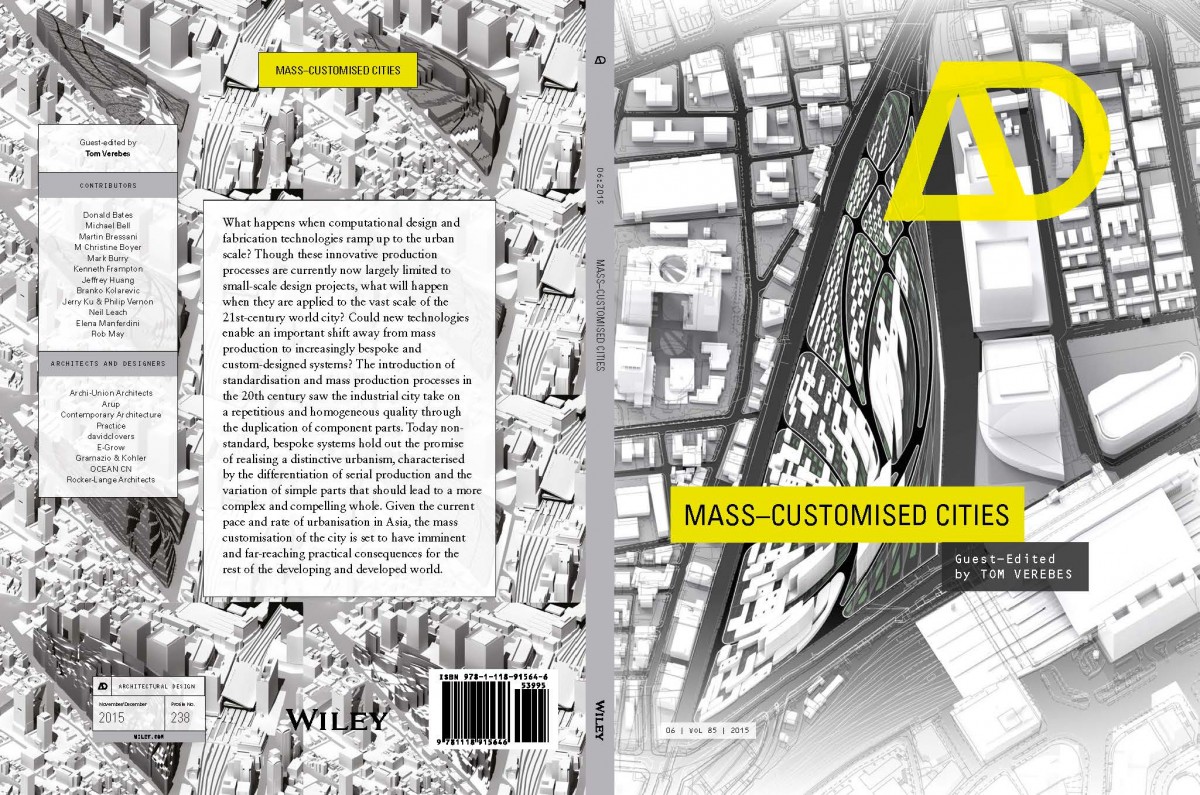Guest-edited by Tom Verebes
CONTRUBUTORS:
Donald Bates
Michael Bell
Martin Bressani
M Christine Boyer
Mark Burry
Kenneth Frampton
Jeffrey Huang
Branko Kolarevic
Jerry Ku & Philip Vernon
Neil Leach
Elena Manferdini
Rob May
ARCHITECTS AND DESIGNERS
Archi-Union Architects
Arup
Contemporary Architecture
Practice
davidclovers
E-Grow
Gramazio & Kohler
OCEAN CN
Rocker-Lange Architects
What happens when computational design and fabrication technologies ramp up to the urban scale? Though these innovative production processes are now largely limited to small-scale design projects, what might happen when they are applied to the vast scale of twenty-first century world cities? Could new technologies enable an important shift away from mass production to increasingly bespoke and custom-designed production? Whereas the introduction of standardisation and mass production processes in the 20th century saw the industrial city take on a repetitious and homogeneous quality through the duplication of component parts, non-standard bespoke production systems holds out the promise of realising buildings with distinctive attributes through the differentiation of serial production and the variation of simple parts leading to more complex and compelling whole. Given the current pace and rate of urbanization in Asia in particular, the themes and arguments presented in this AD issue will have imminent practical consequences for the rest of the developing and developed world. Today’s design technologies link more directly to engineering, manufacturing, and construction delivery systems, opening new possibilities to create increasingly heterogeneous and differentiated urban environments. This issue of AD features a series of essays, interviews and projects, with contributions by leading theorists, historians, architects, engineers and fabricators, which collectively seek alternatives to the legacy of standardized, repetitive modes of spatial and material production. Taking a speculative position towards architecture and cities in the future, the theme of this AD issue dissects the histories and theories of standardized mass production to speculate on the emerging potential of associative design systems, linked to an increasingly large scale of automated manufacturing. The projects and essays featured in this AD bias the specific and unique, over the general and reproducible.

